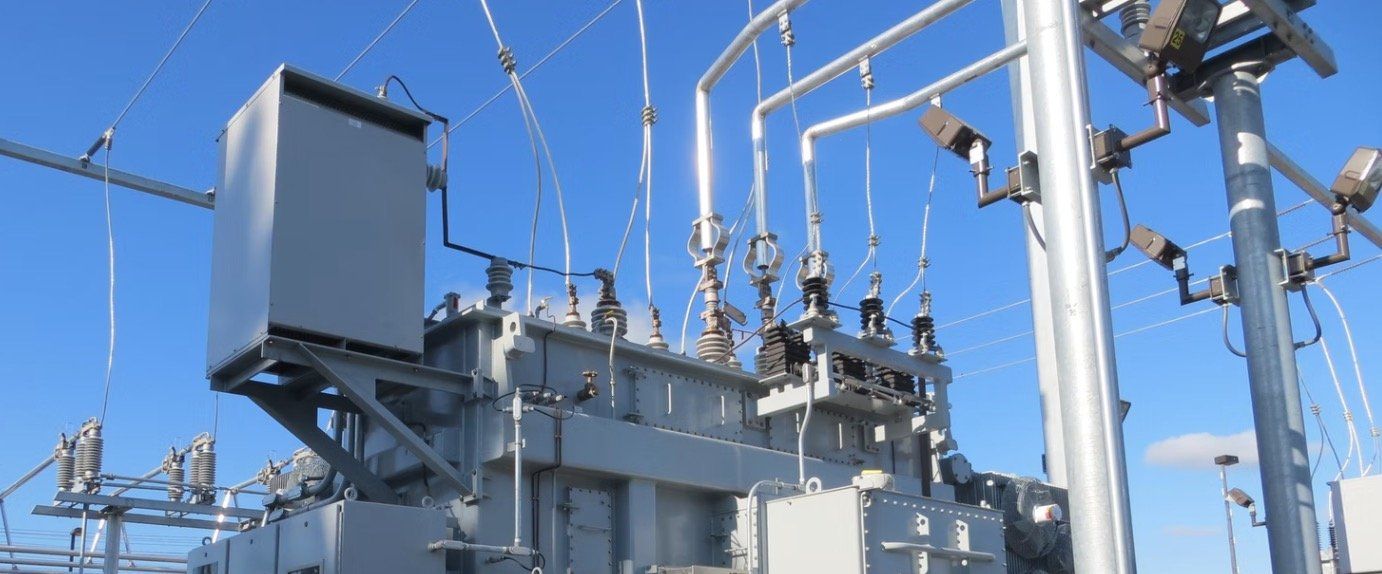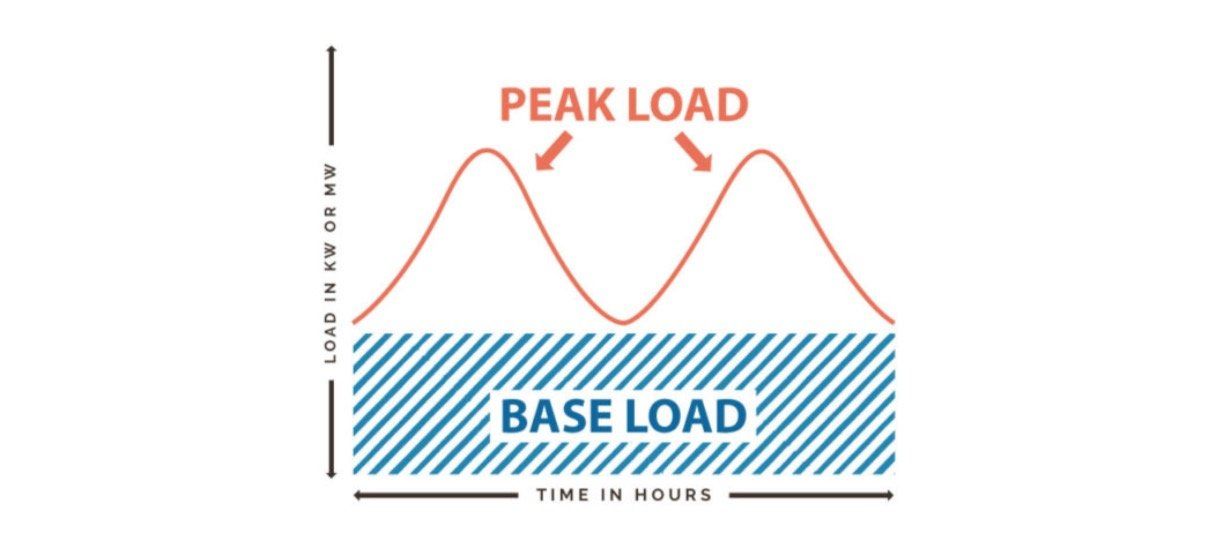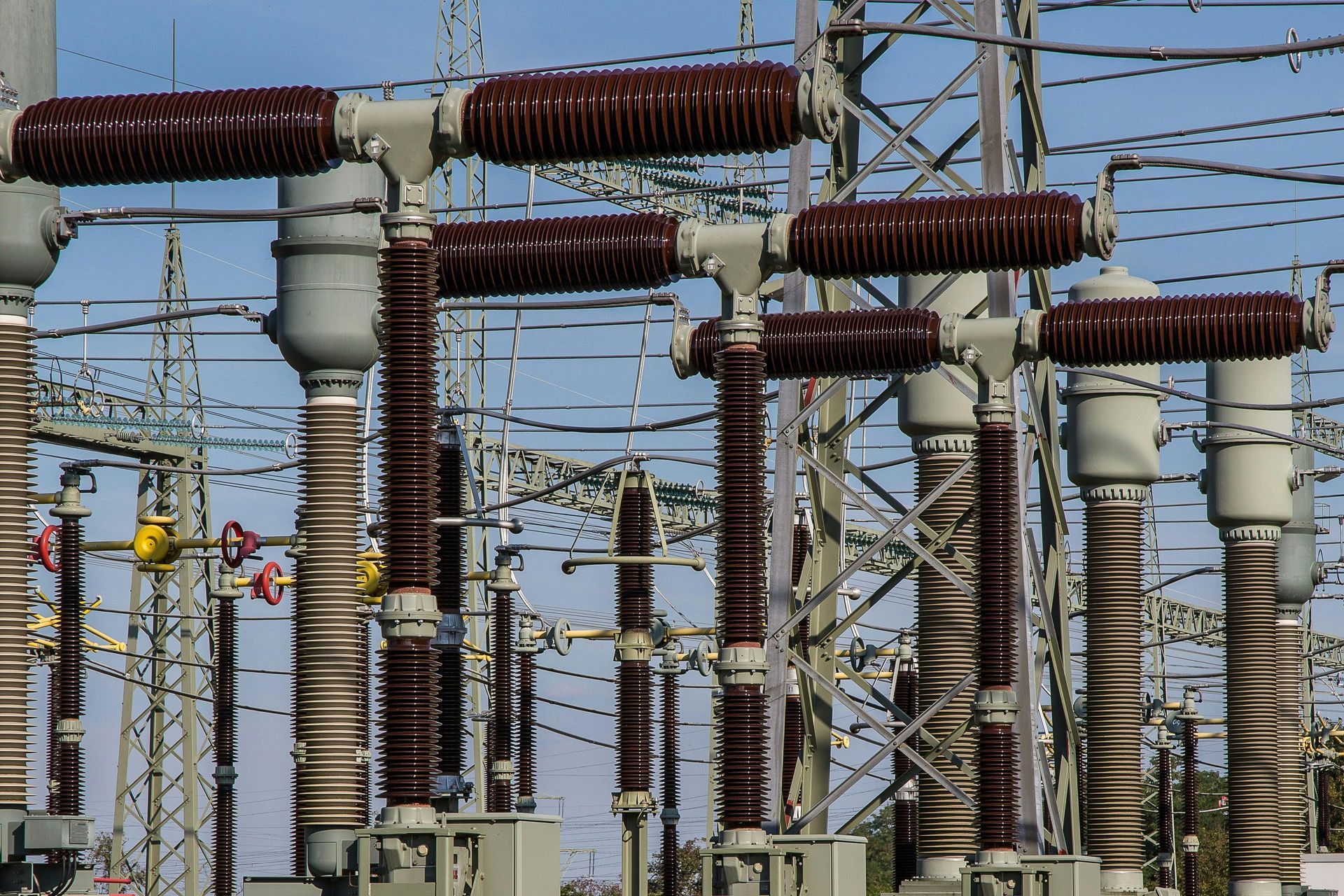What is Peak Load and Base Load?
What Is the Difference Between Peak Load vs. Base Load?

According to Sino Voltaics, Load is “the amount of current being drawn by all the components (appliances, motors, machines, etc.).” Load can be distinguished within two categories– Base Load and Peak Load. See below for what each of those terms mean, their differences, and why this information is important to know for any energy consumer.
The visual below portrays a graph of how load typically can flow throughout each day.
(Source: Sino Voltaics link above.)

What is Base Load?
Baseload: Level of demand is at its minimum for electric current to be delivered or that is required over a given period of time, at a consistent and constant rate.
- Continuous rate and lower amount of electricity needed, thus more predictable than Peak Load
What is Peak Load?
Peak load: The maximum load during a specified period of time.
- The highest demand for electricity needed during a short amount of time
- During times that the sum of electricity usage by appliances or other products that require electricity is high– for example, when staff is all in the office working or when the whole family is at home– the peak load is distinguished by the highest sum of electric current used within one hour of a regular, 24-hour day.
PLCs (Peak Load Contributions) Calculated Per Territory
- ICAP tag - Installed Capacity Tag
- Determined by consumption from the highest, full, single hour, from the previous year.
- Peak hour is the hour that usage was the highest across the entire NYISO grid (not just one zone/utility).
- Effective each May 1- April 30.
- PLC tag- determined by consumption from the highest demand usage during PJM’s five Coincident Peak Hours of the entire independent system operator grid, during the previous June 1 - September 30th metered period.
- Effective each following June 1 to May 31.
- ICAP tag - Installed Capacity Tag
- Similar to the NYISO market, peak load contribution is determined by the peak highest hour of usage, from the previous year.
- Peak hour includes the entire ISO-NE grid (not just one zone/utility).
- Effective each June 1 - May 31.
The Difference Between Base and Peak Load and Why It Is Important
Trying to find a balance utilizing electricity for your home or business is not always an easy task. You may know the hours in which your location is physically busy and using energy most already– that is a key factor for understanding when and where your peak demand lies. During the hours that your home or business is empty or not being used, would be considered the time that can be categorized as base load.
If you’re seeing your energy rates spike on your invoice during any specific month, you can find ways to lessen energy usage and controlling peak demand during busy times and make adjustments during those peak hours, to reduce energy costs over time.
Peak Load Management plans can also be helpful for learning how to reduce capacity charges in the future. One of the suppliers we work with,
Constellation, can help strategize energy consumption, so to reduce your business’s energy consumption and lower the costs.
We hope this helps you understand how energy load and demand can directly affect your monthly bills. Contact us today if your property is in a
deregulated energy territory
and if you interested in a free energy analysis, by sending us a few of your most recent invoice copies to
info@goananta.com and CC:
support@goananta.com.











